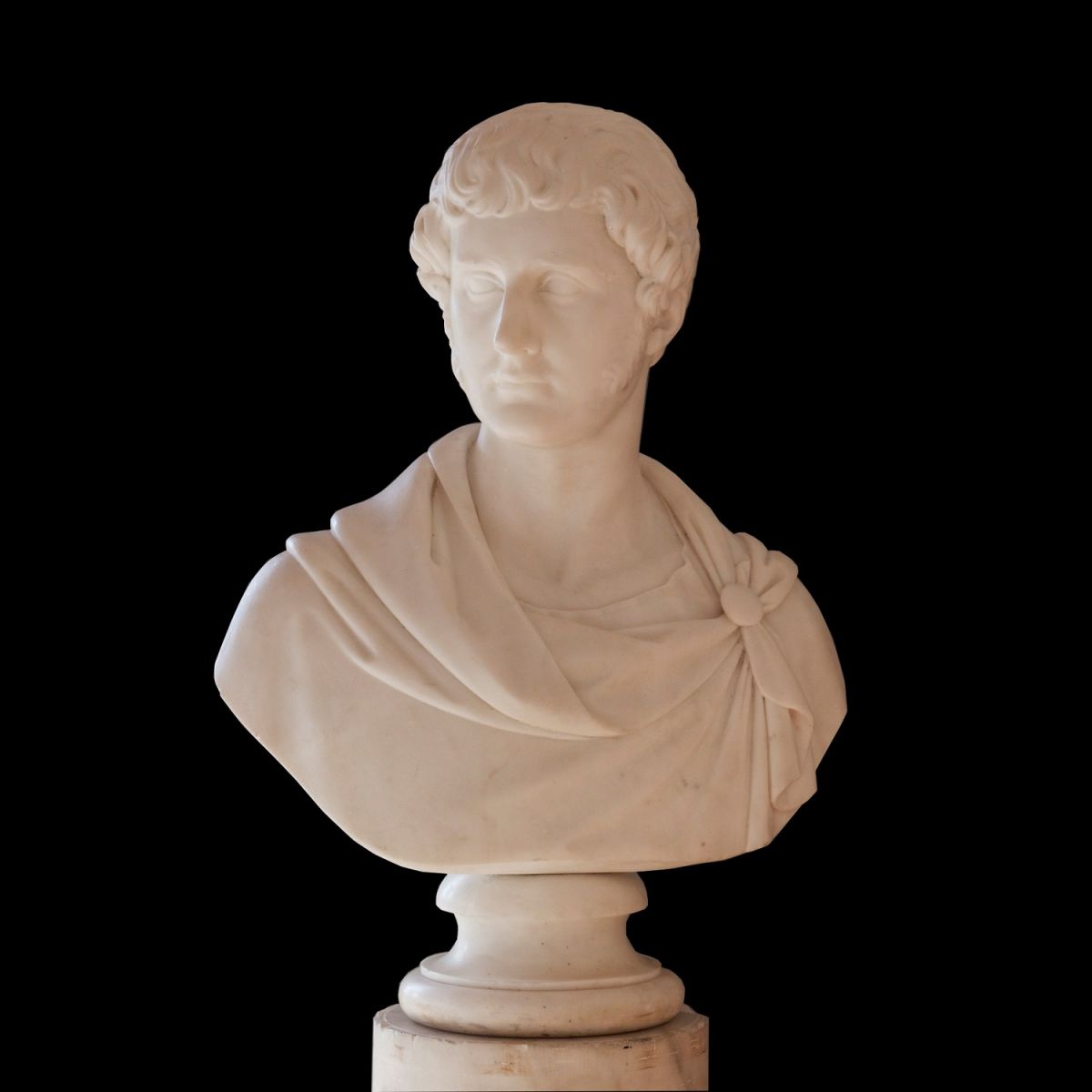A MARBLE PORTRAIT BUST BY THOMAS CAMPBELL (1790-1858) ROME, 1824
A MARBLE PORTRAIT BUST BY THOMAS CAMPBELL (1790-1858) ROME, 1824
Rome Italy | 1824 POSSIBLY OF JOHN HOPE, 4TH EARL OF HOPETOUN A carved marble bust, depicting the sitter in Classical robes. Presented on an integrated waisted socle and inscribed to the reverse ‘THOS. CAMPBELL FECIT ROMÆ 1824.’ Thomas Campbell was an Edinburgh-born sculptor who found fame in Rome before settling in London after 1830. He first arrived in the Eternal City in 1819, studying at the Royal Academy under the patronage of Gilbert Innes of Stowe, the Deputy Governor of the Bank of Scotland. There, he was introduced to Antonio Canova and Bertel Thorvaldsen, even securing first casts of their works for the students of the Academy of Edinburgh. He was able to attract a number of notable Scottish patrons, and in 1820 he opened his own studio at 12 Piazza Mignanelli. Indeed, Ingrid Roscoe notes that by the time he received his first commission from George IV in 1826 ‘Campbell was the doyen of Scottish expatriate sculptors in Rome.’ The present work was executed during this period of Roman success, and epitomizes the contemporary trend for Neo-classical portrait busts. It is perhaps a study for Campbell’s first public commission, an equestrian bronze of John Hope, 4th Earl of Hopetoun (1765-1823), still on view in St Andrew Square, Edinburgh. Although John Hope was older at his death than this posthumous portrait would suggest, it seems possible that the sculptor decided to show him as a younger man in keeping with the militaristic theme of the finished bronze. Certainly, the Edinburgh sculpture was commissioned in 1824 and likewise depicts Hope as a Roman General in a toga, with a prominent nose and distinctive sideburns – an unusual choice of facial hair for this period.
Inventory Code: OUT-8575
Dealer: Anthony Outred
A MARBLE PORTRAIT BUST BY THOMAS CAMPBELL (1790-1858) ROME, 1824
Rome Italy | 1824 POSSIBLY OF JOHN HOPE, 4TH EARL OF HOPETOUN A carved marble bust, depicting the sitter in Classical robes. Presented on an integrated waisted socle and inscribed to the reverse ‘THOS. CAMPBELL FECIT ROMÆ 1824.’ Thomas Campbell was an Edinburgh-born sculptor who found fame in Rome before settling in London after 1830. He first arrived in the Eternal City in 1819, studying at the Royal Academy under the patronage of Gilbert Innes of Stowe, the Deputy Governor of the Bank of Scotland. There, he was introduced to Antonio Canova and Bertel Thorvaldsen, even securing first casts of their works for the students of the Academy of Edinburgh. He was able to attract a number of notable Scottish patrons, and in 1820 he opened his own studio at 12 Piazza Mignanelli. Indeed, Ingrid Roscoe notes that by the time he received his first commission from George IV in 1826 ‘Campbell was the doyen of Scottish expatriate sculptors in Rome.’ The present work was executed during this period of Roman success, and epitomizes the contemporary trend for Neo-classical portrait busts. It is perhaps a study for Campbell’s first public commission, an equestrian bronze of John Hope, 4th Earl of Hopetoun (1765-1823), still on view in St Andrew Square, Edinburgh. Although John Hope was older at his death than this posthumous portrait would suggest, it seems possible that the sculptor decided to show him as a younger man in keeping with the militaristic theme of the finished bronze. Certainly, the Edinburgh sculpture was commissioned in 1824 and likewise depicts Hope as a Roman General in a toga, with a prominent nose and distinctive sideburns – an unusual choice of facial hair for this period.
Inventory Code: OUT-8575
Dealer: Anthony Outred






